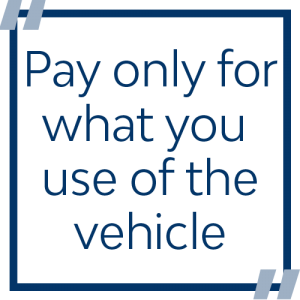
WHAT IS LEASING?
Leasing finances the depreciating portion of the vehicle’s cost plus an interest equivalent, meaning you pay only for what you use of the vehicle. The result is lower payments without ownership, though you have the option to purchase at lease-end.
Buying a vehicle often includes obtaining a loan. Loans finance the entire purchase of a vehicle – you pay for the entire cost, including depreciation, and have ownership.


Leasing finances the depreciating portion of the vehicle’s cost plus an interest equivalent, meaning you pay only for what you use of the vehicle. The result is lower payments without ownership, though you have the option to purchase at lease-end.
Buying a vehicle often includes obtaining a loan. Loans finance the entire purchase of a vehicle – you pay for the entire cost, including depreciation, and have ownership.
BUYING VS. LEASING
Accounts
Free Trial
Projects
SSL
Storage
Domains
BUYING
Buying a vehicle often includes obtaining a loan. Loans finance the entire purchase of a vehicle – you pay for the entire cost, including depreciation, and have ownership.
Pride of Ownership:
The vehicle is titled in the buyer's name, allowing them to do whatever they want with the vehicle, like modifying the vehicle's parts.
No Mileage Penalty:
The owner can place unlimited miles on their vehicle, although additional depreciation occurs with higher miles, lowering the resale value.
Increased Flexibility:
The owner can sell their car whenever they want to, although they are subject to changes in the used car market and the challenge of selling the vehicle.
LEASING
Leasing finances the depreciating portion of the vehicle’s cost (use of the vehicle) plus an interest equivalent. The result is lower payments without ownership, though you have the option to purchase at lease-end.
Lower Monthly Payments:
Lease payments will always be lower than a conventional loan because the lessee is only paying for a portion of the vehicle's full value over the lease term.
Lower Up-Front Costs:
Unless the lessee decides to make a large capitalized cost reduction, initial costs for most leases are limited to the first month's payment, taxes (which can be capitalized in the lease for states where taxes are due upfront), acquisition fee, and title/license fees.
More Vehicle for Your Money:
The lessee can drive a newer vehicle for less money and do so more often as they renew in the leasing cycle, typically every three to four years.
Fewer Maintenance Headaches:
The lessee incurs lower costs with a lease term that coincides with the manufacturer's new-vehicle warranty, covering most repair bills.
Gap Waiver Coverage:
Every CU Xpress Lease contract includes gap waiver coverage for the lessee's protection. In situations where the vehicle is stolen or totaled, gap waiver coverage pays the difference between the balance owed on the lease and the insurance proceeds.
Hassle Free Lease-End Options:
At the end of the lease, the lessee can purchase the vehicle for the residual value that is stated in the lease contract, or they can return the vehicle to Fusion.
BUYING ADVANTAGES
- Pride of Ownership
- No Excess Mileage Penalty
- Increased Flexibility
LEASING ADVANTAGES
- Lower Monthly Payments
- Lower Up-Front Costs
- More Vehicle for Your Money
- Fewer Maintenance Headaches
- Gap Waiver Coverage
- Hassle Free Lease-End Options
LEASING TERMS
The fee charged by leasing companies and banks to cover expenses of administrating the lease.
The fee charged to cover expenses of cleaning, preparing, transporting and selling the vehicle after you return it at lease end.
Agreement to waive the difference of what you owe on the lease and what your insurance company will reimburse if your car is stolen or destroyed.
The number of miles you can drive during the duration of your lease agreement. Exceeding the allowance will result in an excess mileage charge because the number of miles affects the residual value of the vehicle.
Set at the beginning of the lease, this is the vehicle’s estimated value at lease end. The RV is used to calculate your monthly payment. The higher the RV, the lower the monthly payment (less depreciation).